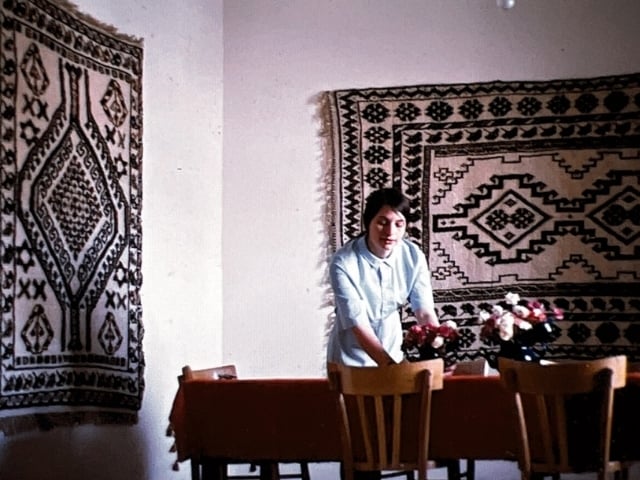Published: January 30, 2024

On Nanette (Nan) Holben’s “to-do” list after she moved into Kendal last year was to meet other residents who, like her, were Peace Corps Volunteers (PCV). That happened in November, when a dozen residents gathered for dinner to share stories about their time in the Peace Corps, which ranged from 1963 to 2012. The group included one married couple, and Larry Mirel, who worked in the Peace Corps Washington, D.C. office in the mid-1960s.
Along with their reminiscing, the men and women also talked about ways to carry the Peace Corps torch forward. Ideas include helping to reinvigorate Peace Corps college recruiting efforts in Ohio and offering a public program and exhibit highlighting their varied Peace Corps experiences.
Now, we want to now share some of their stories with you.
Linda and David Bell
Senegal and Liberia
1968-1971
Linda writes:
“We joined the Peace Corps in June of 1967 and spent that summer in a Peace Cops experimental program in Rock Castle County, Kentucky. What was most important there was having our wedding pictures displayed to prove we were married, not just living together. We then spent the next academic year working on college degrees and studying French as we were going to be sent to Senegal.
I would be doing community development work, David teaching English to the native French-speaking Senegalese adolescents. This did not work out so well because the students went on strike. (They had been promised an Africanized curriculum which didn’t materialize.) So, we moved to Liberia where I taught English and David taught math and science.
The most important thing that happened to me in the Peace Corp was in Senegal. I experienced myself as a strong believer in civil rights. In Senegal, where the men were tall, black and handsome, I found myself becoming very angry after talking with them. After a time, I asked myself, ‘What is it about these men that makes me angry?’ The answer came, ‘Because they act like they’re white.’ Having grown up in Texas, I could not remember seeing a black man stand up straight and look me in the eye. My grandfather was Klan, but I thought I had totally evolved into one of the good guys.”
Rebecca Cardozo
Thailand
1973-1975
“I was 26 when I began my 2-year service as a PCV in Thailand. I wanted to see how other people lived and experience another culture, its people and their way of living. I taught English in Teacher Training Colleges in small towns. During vacations, some volunteers chose to visit other countries. I chose to visit nearby villages.
In these villages I felt the pulse of beautiful people living creative and productive lives. There may not have been any running water, electricity or indoor toilets in their homes. Still, they worked the rice fields, fed their families and sent their children to school. And they welcomed me with heartfelt smiles. During my visits, I watched while beautiful silk fabrics were made, starting from silk worms to finished silk clothing. I listened to the spirit tone of a handmade musical instrument played by a villager. I gazed in awe at the biggest, brightest full moon I have ever seen. And I felt the excitement of children seeing an American for the first time!
What a gift we all gave each other, meeting face to face and heart to heart. I am grateful for my Peace Corps experience. It has enriched my life to this day.”
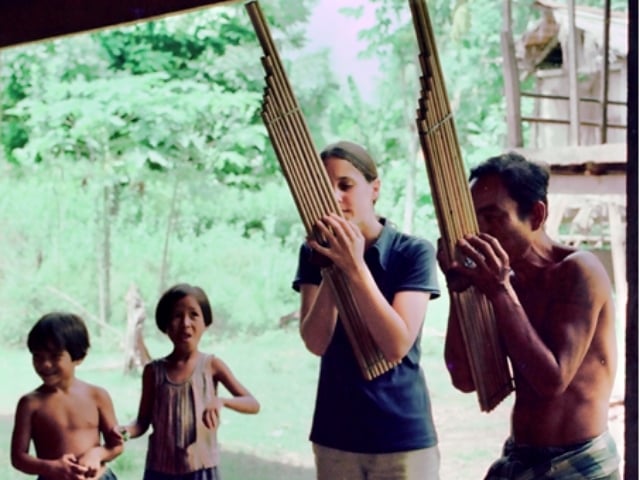

Ann Francis
Malaysia
1964-1967
“I learned so much and am forever grateful that I met and worked with so many wonderful people in Sandakan, Sabah, Malaysia where I was assigned to teach English to junior level students and supervise and train teachers.
The students were hardworking and learned quickly. It was very rewarding to begin with a class of students who did not use conversational English and within 6 months were able to make significant progress.
I was an early PCV in Sabah, Malaysia and although intentions to do good ran high among volunteers, the motivation of U.S. government and also the efforts we made had questionable impact. We bolstered the education system by replacing the teachers from England who were there before independence, which had value but also drawbacks at times setting high and false expectations based on the realities of the social, economic and political situation.
For me the Peace Corps is a cautionary tale and complicated to talk about 60 years later. It was a good experience and changed the trajectory of my life. I advise people to think carefully about their motivations to join and also the actual role they may have, which isn’t always clear. The Peace Corps can help us realize that people are not always their government and enable us to make lasting positive impressions and connections. Nevertheless, the choice should be carefully researched and studied by those considering service.”
Sharon Furrow
Malaysia
1963-1965
“By far, the best thing about my time in the Peace Corps was getting to know my students. My students in Malacca were all Chinese, as were most of the teachers at my school.
My most memorable negative experience was the time I was almost killed. I was invited on a day trip to an island in the Straits of Malacca along with a group of students and some other teachers. I was with the group walking around the edge of the island when the ground beneath me gave way and I started to slide down the cliff, as I had been walking not on solid earth but on tangled vegetation. I grabbed a branch and held on while some teachers grabbed me by my two wrists and managed to pull me back up to the edge before I slid further down to the rocks and surf below. I was too shaken to continue the walk back to our base, so nearby Malay fishermen brought their boat to a place I could access and took me back.
There were 75 people in my PCV group who went to Malaysia. After our return to the U.S. I stayed in touch with them and we visited or travelled together. In the late 90’s, over 30 years later, we decided to organize a reunion of the entire group, located nearly all 75 and started a newsletter to make it happen. Over the years since then, we’ve had three reunions and were planning a fourth in 2020 when Covid put a stop to our plans. Although no more reunions are likely, we continue to do newsletters to keep everyone up to date on how we are all doing.”
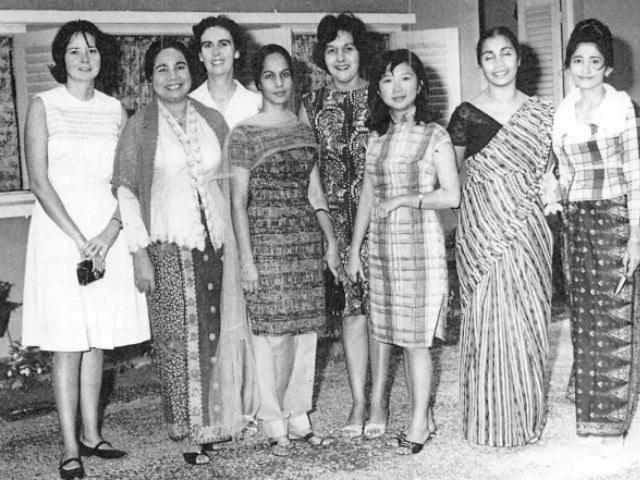
Barbara Groseclose
Moldova
2012
“I was accepted into Peace Corps at the beginning of 2012, having retired from my academic life not many months before. Because I checked the location category declaring that I would be happy assigned anywhere, one branch of the Corps initially prepared to send me to Indonesia until the medical branch pointed out that, given as many carcinomas as I had experienced even in the Midwest, living in a tropical country for two years was not the best idea. I was quickly re-assigned to Moldova, an eastern European country bordering Ukraine and Romania, the only European country requesting PCV in this century.
During my academic career, I lived in many different European countries but one surprise I experienced in Moldova is that it was (and still is) strongly inadvisable to drink tap water anywhere in the country. I drank only mineral water, carrying a 1.5 liter bottle daily from the village store to the family home where I was assigned.
If an illness or injury occurs while serving abroad, Peace Corps locates and assists medical treatment. They will transport a PCV to any nearby country for treatment or back to the U.S. if the assigned country is not suitable medically. After one recovers in a reasonable amount of time, the PCV returns to the initial or similar assignment. However, if a medical problem requires lengthy treatment or after recovery a physical alteration less beneficial for PCV activity occurs, the assignment may complete early. Operations on both of my eyes from a visual problem that developed in Moldova resulted in five months recovery. It was sad but necessary to become an RPCV (Returned Peace Corps Volunteer).”
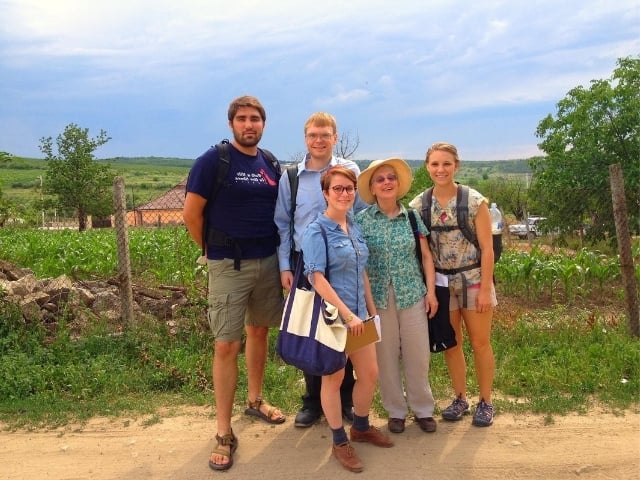

Carol Hall
Colombia
1963-1965
Nanette Holben
Libya
1968-1969
“In 1968, the Peace Corps was not quite a decade old but its idealistic goals appealed enormously to college graduates in the ‘give peace a chance’ era. I was 21 years old—a new college graduate—and the opportunity to teach in a third-world country and to experience a completely unfamiliar culture was highly appealing.
I was assigned to a new program in Libya, once among the world’s poorest Arab countries until the discovery of oil in Libya’s huge Sahara Desert territory. The program itself was idealistic: a far-sighted Minister of Education believed that teaching English beginning in 4th and 5th grades would prepare students to attend colleges in England and America—the two countries that were then controlling the oil fields. Libya was no longer poor, but it had little control over its oil assets. Advancing educational opportunities was central to Libya’s long-term goal of managing the oil operations.
I taught boys (unusual for a woman in an Arab country) and loved every minute of it. We were warmly welcomed into Libyan homes (though segregated by gender during our visits). Our first year was a happy one, and we looked forward to our second. However, two weeks before the school year began, a coup d’etat took place and Muammar Gaddafi seized power. It was supposedly a “peaceful” coup, but the Peace Corps could not take the chance of leaving 200+ volunteers all over the country, and we were soon evacuated. Indeed, as time went on, Libya was no longer a peaceful country, and to this day I wonder how the boys in my classes fared.”
Janet Larsen
Burkina Faso
2010-2012
In 1982 I visited my daughter when she was in the Peace Corps in Mali. She pointed out that several of the volunteers in her group were retirees and I decided I would volunteer when I retired. (Her daughter then served in Senegal 2015-17 so we are a three generation Peace Corps family.)
In Burkina Faso, West Africa I worked in the Girls Education and Empowerment Section. My greatest success was working with one of the teachers who was interested in this topic and helping her get her Master’s thesis formatted and printed so she could get her degree in Anglophone literature. She is now the head of an NGO that works to help girls stay in school.
I was also able to work with a 10-year-old neighbor girl who needed help with reading and math. I know that she finished school but have not heard from her family for several years.
The Peace Corps was a fine retirement activity!”
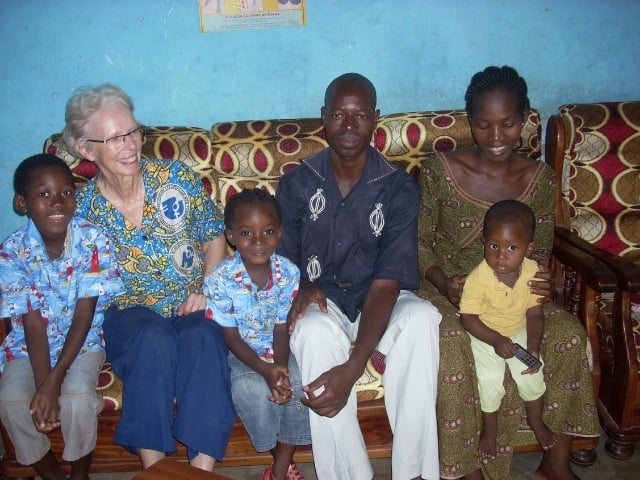
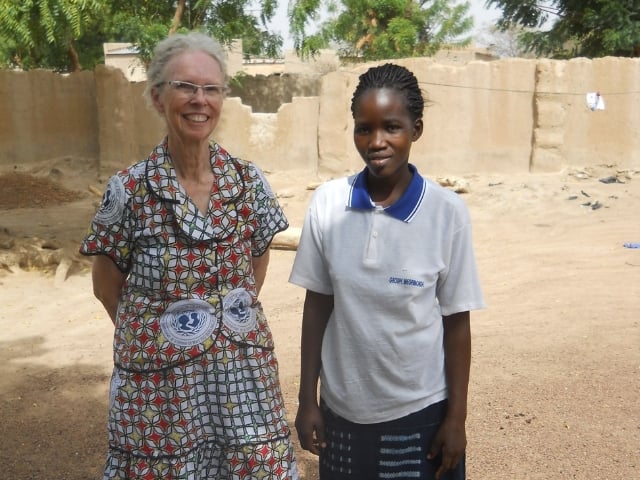
Anne Martin
Panama
1966-1968
I’ve always loved learning about other cultures and learning other languages. While I was working on an M.A. in English, I met a group of Peace Corps trainees and found kindred spirits. I had planned to get a teaching job but shifted gears and applied to the Peace Corps. A new program called Central American University Education required an advanced degree. Two days after I finished my Masters and turned 23, I began Peace Corps training, found I could learn Spanish quickly and could use my background to be a teacher trainer and work with the Ministry of Education on national English test development and curriculum.
During my training, I met Tom Martin, also assigned to Panama, and we got married a year later. In Panama, we lived with a Panamanian family, and with them, went through two military coups. I taught English as a Second Language at the Catholic University and traveled the country giving master classes and working with various K-12 schools. (Tom worked at the fledging computer center at the University of Panama.)
My Peace Corps experience led me to my profession (Teaching English as a Second Language), a Ph.D. and positions at various U.S. universities, and the opportunity to travel the world as a teacher trainer. Thirty years later, we returned to Panama. Tom died in 2014.”
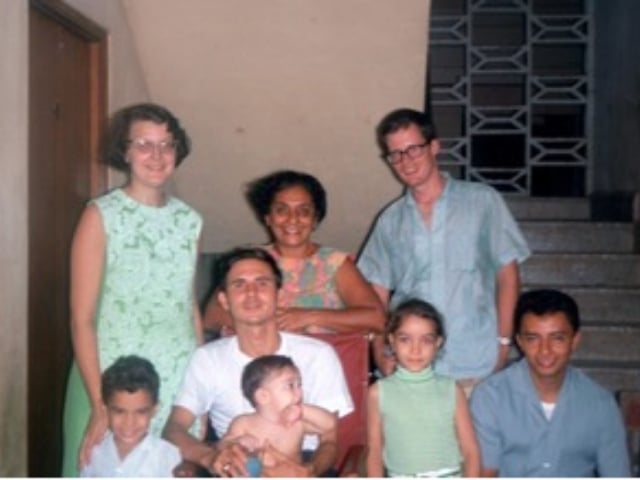
Ted Wolner
1966-1968
Peru
“While a graduate student in England, the Peace Corps appealed to me because:
- I loved the sense of adventure it promised, immersing myself totally in a foreign culture;
- It embodied the sense of idealism/service at the time;
- I loved the idea of becoming fluent in foreign language and chose Latin America since Spanish was useful in so many different countries;
- It was so much more visceral than continuing graduate school
Most memorable experience was working and living with a group of residents in a shanty town outside the nation’s major northern city to raise money for a small high school (a 3-room cinder-block, cement-floor, corrugated tin roof affair). The shanty town had no paved streets, sewage service or lights, and water from public taps were far apart from one another.
In the first six months the psychological pressures of always living, speaking, working, partying dreaming in a foreign language in a foreign culture was difficult. After that period things got much easier.
Learn More About Kendal at Oberlin – A Vibrant Community for Older Adults
Are you making plans for your future? Kendal at Oberlin offers an active lifestyle with opportunities for lifelong learning, art and culture.
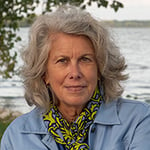 In the past, Molly Kavanaugh frequently wrote about Kendal at Oberlin for the Cleveland Plain Dealer, where she was a reporter for 16 years. Now we are happy to have her writing for the Kendal at Oberlin Community.
In the past, Molly Kavanaugh frequently wrote about Kendal at Oberlin for the Cleveland Plain Dealer, where she was a reporter for 16 years. Now we are happy to have her writing for the Kendal at Oberlin Community.
About Kendal at Oberlin: Kendal is a nonprofit life plan community serving older adults in northeast Ohio. Located about one mile from Oberlin College and Conservatory, and about a 40 minute drive from downtown Cleveland, Kendal offers a vibrant resident-led lifestyle with access to music, art and lifelong learning.

